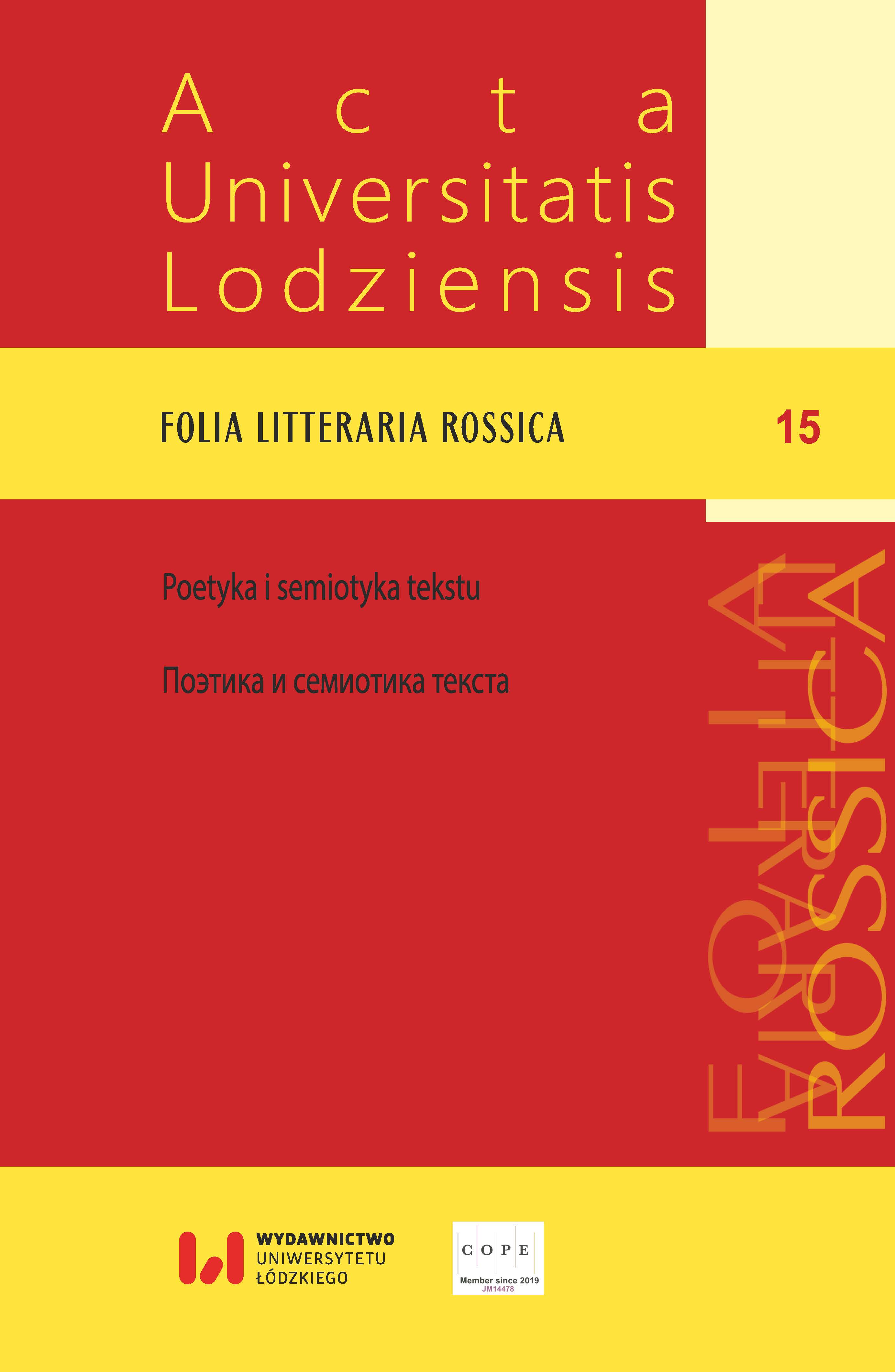Изобразительность и пластичность в поэзии Бориса Куприянова
DOI:
https://doi.org/10.18778/1427-9681.15.13Słowa kluczowe:
Борис Куприянов, ленинградский андеграунд, самиздат, роман в стихах, лирические жанры, лирические топосы, живописностьAbstrakt
Малоизученный поэт «второй культуры» Борис Куприянов близок другим авторам религиозно-метафизической традиции ленинградского андеграунда, за исключением его стремления к большой форме. Его лирика представляет собой подготовительные формы романа в стихах, эксперименты по созданию сложной системы персонажных отношений внутри лирического высказывания. Это позволяет при актуализации элегических и эпиграмматических элементов лирики привлечь образность различных искусств, как было принято у поэтов его круга. Но его отношение к искусству не синтетическое, а аналитическое: он видит в искусствах не создание емких образов переживаний, а различные слои опыта, так что каждое искусство для него обладает не только собственной выразительностью, но и длительностью артикуляции лирической эмоции. Внимательное прочтение двух стихотворений этого автора с учетом доступных ему источников речевых фигур и цитат позволило установить общие закономерности при наложении образов живописи, графики и архитектуры в перспективе изобретения романного героя. Общим сюжетом стихов разных лет оказывается полемика с отвлеченными тезисами философии, от неоплатонизма до экзистенциализма, не учитывающими специфической динамики отдельных искусств. Реконструировано параллельное развитие эстетической и мировоззренческой программы Бориса Куприянова: восприятие неоплатонизма через труды Алексея Лосева и христианской мистики через общение с кругом Татьяны Горичевой и Олега Охапкина потребовало относиться к лирике как к моменту самоопределения, фиксации текущего состояния мистической отрешенности. При этом лирика оказывалась конфигурацией живописного и пластического способов выражения мистических символов, недостаточных для развернутой лирической биографии, но необходимых для фиксации фактичности мистического опыта.
Pobrania
Bibliografia
Camus, Albert. “Mif o Sizife”. Chasy. No. 3 (1976): 150–228.
Google Scholar
Kupriianov, Boris L. Guliane. https://www.facebook.com/scrinium/posts/10212752961793770
Google Scholar
Kupriianov, Boris L. “Posviashchenie”. Zvezda. No 3 (2014). https://magazines.gorky.media/zvezda/2014/3/stihi-2202.html
Google Scholar
Kupriianov, Boris L. “Slovo, opalennoe Dukhom: interviu”. Voda zhivaia, 11 february 2015. http://aquaviva.ru/journal/slovo-opalennoe-dukhom
Google Scholar
Kupriianov, Boris L. Stikhi. 1970–1975. https://rvb.ru/np/publication/05supp/b_kuprijanov/70-75.htm
Google Scholar
Kupriianov, Boris L. Vremia vstrechi. Roman v stikhakh. Paris: Beseda, 1989.
Google Scholar
Losev, Alexey F. Istoriia antichnoi estetiki. Poslednie veka. Vol. 2. Moskva: Iskusstvo, 1988.
Google Scholar
Okhapkin, Oleg A. “Boris Kupriianov (liricheskii ocherk)”. 37. No 3 (1976): 42–45.
Google Scholar
Proclus. Pervoosnovy teologii, transl. A. F. Losev. Moskva: Progress, 1993.
Google Scholar
Valieva, Yulia M. Kupriianov Boris Leonidovich. In: Literatory Sankt-Peterburga. 20 vek. Entsiklopedicheskii slovar. https://lavkapisateley.spb.ru/enciklopediya/k/kupriyanov-
Google Scholar
Pobrania
Opublikowane
Jak cytować
Numer
Dział
Licencja

Utwór dostępny jest na licencji Creative Commons Uznanie autorstwa – Użycie niekomercyjne – Bez utworów zależnych 4.0 Międzynarodowe.












